Jan de Vylder
Architecten Jan de Vylder Inge Vinck
ArchIdea 61 Interview, October 2020
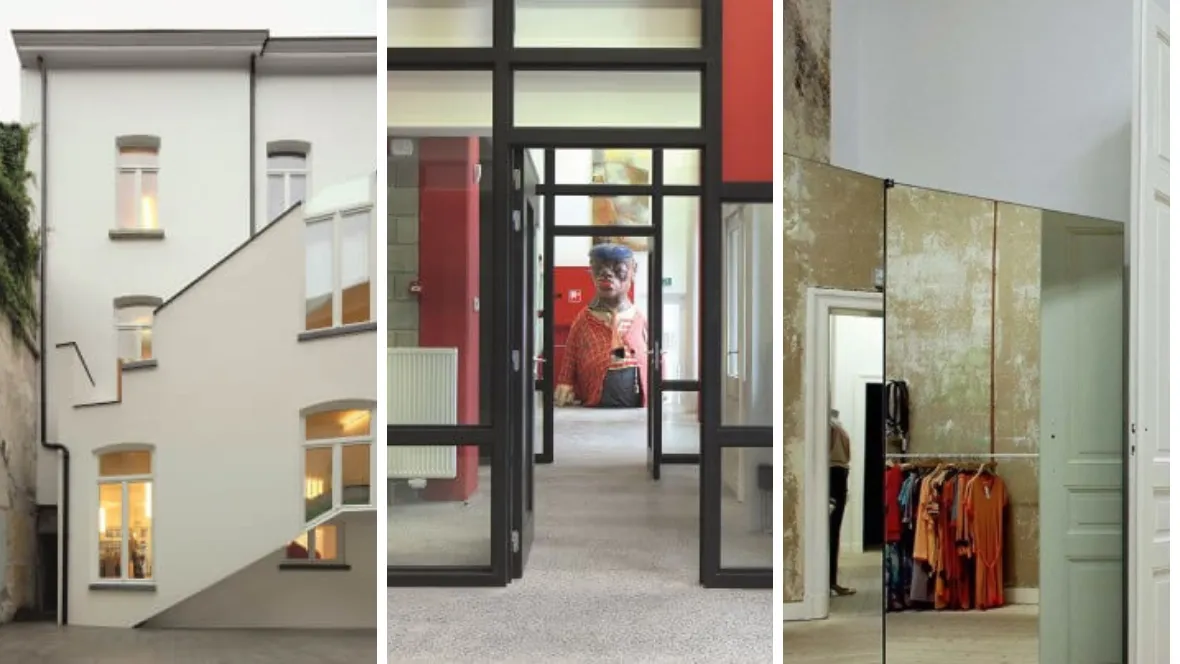
JAN DE VYLDER, FROM THE OFFICE ARCHITECTEN JAN DE VYLDER INGE VINCK, IS FASCINATED BY THE FRICTIONS OF DAILY LIFE. HE AIMS TO SEE AND EXPERIENCE ITS COMPLEXITIES. "I ENJOY CREATING LITTLE MOMENTS OF CONFUSION."
"God is in the details," the architect Mies van der Rohe proclaimed. The architectural office of architecten jan de vylder inge vinck (architecten jdviv) takes that famous epigram seriously: detail means everything to this Belgian architecture firm. Yet their attitude towards detail seems to be the very opposite of that of Mies van der Rohe. For example, they have picked out imperfections in the concrete finish of their Ledeberg Services Centre, Ghent, in bright red paint. Things that might drive other architects to fury or despair are transformed by architecten jdviv into a distinctive architectonic idiom of their own. The beauty of the blemish beats perfection; a shortcoming is changed into a cherished quality.
"Nowadays detail has become largely a technical matter," Jan de Vylder explained with regard to Mies van der Rohe's epigram. De Vylder leads architecten jdviv together with Inge Vinck. They co-founded the office in continuation of jan de vylder architecten (JDV A - 2008) and architecten de vylder vinck taillieu (A DVVT - 2010). "Cold bridges must be avoided, the resistance to wind loading must be sufficient: it is mainly technical issues like these that dictate architectural detail. Yet at the same time detail bears no relation to these issues, nor, ultimately, to the so-called perfection of Mies van der Rohe. He indeed said 'God is in the details' but if you look closely at his apartment towers on Lake Shore Drive in Chicago you can see that even he couldn’t avoid improvising: gaps in the structure must have made frequent sealant maintenance necessary. That has nothing to do with perfection. I see detail as a matter of adaptation, of how things meet up or don't. Usually the things don't meet up well. I'm interested in utilizing that failure to meet up properly in such a way that a unity is achieved nonetheless."
 (1).jpg)
Should we take that to mean that disparate elements refusing to match up is inherent to architecture?
"Yes, things that don't go together easily are often brought together in architecture. I am thinking here not only of the technical conflicts but also of the human, social and cultural aspects of a building project. Moreover, we have to take into account the expectations of clients, budgetary constraints, the potentials of a building and the impact it has on ecology. All in all, there is an incredible diversity of parameters that have to be orchestrated in one way or another. Everything comes together in the detail; the detail is the sublimation of the problems of how to join everything up neatly. It was an epiphany to me when I finally realized that we shouldn't keep striving to match things up perfectly, but that we should study how to develop 'in-betweens' that join one thing to another. In other words, it's wrong to say that the quality of Mies's architecture lies in its perfection. I appreciate Mies precisely because he dared to create beauty by letting go of perfect detailing."
So in your view the potential of architecture actually lies in imperfection?
"You could put it that way, yes. If you bring different things together, you can first of all observe the resulting impasse, and then exploit it in order to make an interesting addition to the design, or to take a different attitude towards what presented itself as insoluble, so that a problem turns into a quality. I have never been too fond of fudging things or blurring them over. Even less do I like presenting fudging as purity, such as a perfect-looking façade that veils all kinds of things from view. Generally speaking, I prefer to make the materiality of things explicit. That even applies to the mirrors that we often use in our architecture. We use mirrors to demonstrate the incapacity to resolve a problem. Instead of solving the problem we give it a new twist, so that it effectively disappears. The problem can't be resolved by bringing two elements closer together, no, that piece of mirror covers up some insulating material or some other infill. Fudging isn't quite the right word for this situation, it's more a game of hide-and-seek. The art of hide-and-seek doesn't mean that you simply hide somewhere, but that you give the impression of being somewhere else; it's a matter of distracting attention. That's what we do when we use a piece of mirror."
Are games like hide-and-seek something you play just for the fun of it?
"Certainly. I love it when people notice details of that kind and it brings a smile to their face. There's little that's visionary or profound about it, I'll admit, but I'm satisfied if our buildings make people happy. I also consider it important not to give everything away at once, but to let it dawn on people on a second or third reading — as when someone is enjoying breakfast at home and suddenly wonders 'what's up with those beams? Where do they begin and end, what supports what?'"
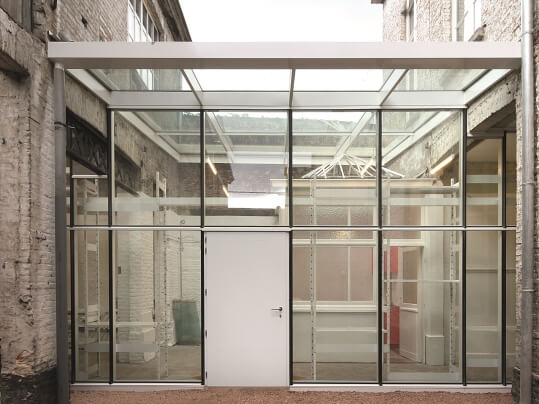
Jan de Vylder Tangarm Jewellery Store Belguim
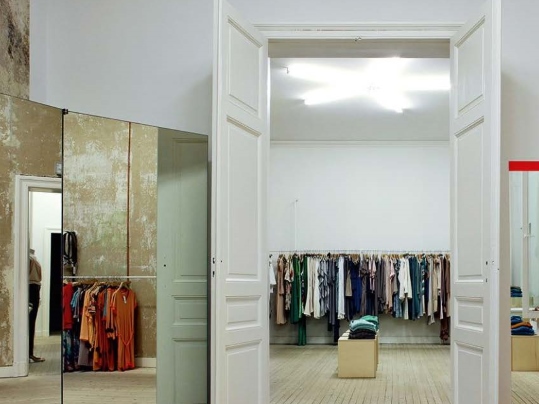
Jan de Vylder use of mirrors
The appreciation for details manifested by architecten jdviv reminds us of realism in literature. There too the emphasis is on the description of details rather than on meaning and symbolism.
"That's true, I consider details to be incredibly important. Life just happens to consist of a succession of details that blend into a continuity. As regards building, I would like to arrange those details in a different order so that something arises that surprises people, and they wonder however we came to think of it. Achieving a poetry of that kind depends on a thorough knowledge of the craft, combined with daring to step back from it at the right moment and to take other things into consideration, to spot new opportunities. Given this kind of outlook, can I still call myself an architect? I admit I don't know. Whatever the case, I remain a passionate enthusiast of arranging things into a new pattern."
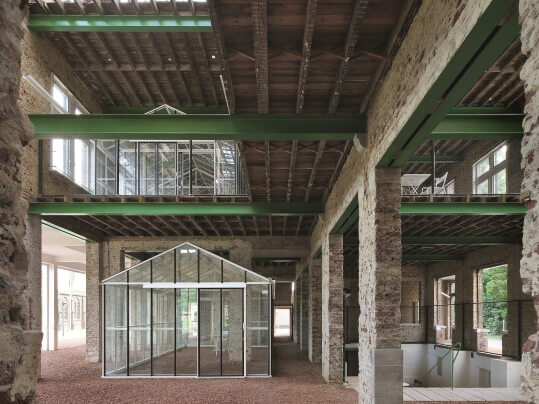
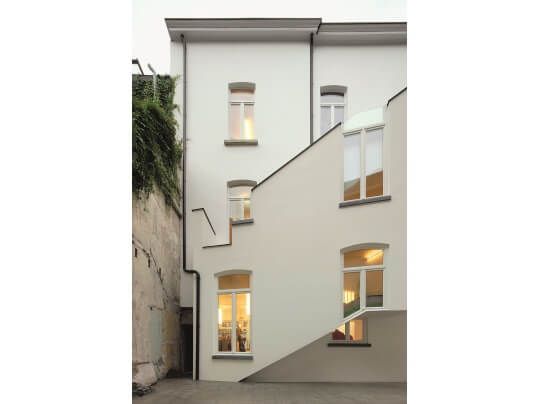
Architecten jdviv uses various strategies to attain that surprising new arrangement. One of them, as you mentioned, is the use of mirrors. By reflecting, the mirror places the status of what is real open to discussion. Raising questions about "realness" reappears in many different guises in your work. Why?
"In order to preserve my amazement about life, I enjoy creating little moments of confusion. This applies as much to myself, to my thinking and doing and not doing, as to others. Generally it's more interesting to picture the opposite of what you normally think or do or avoid. I wonder about the things that present themselves to me. These doubts occupy my mind more and more in recent years. Architecture is not a matter of architecture, scale is not a matter of scale, context is not a matter of context, meaning is not a matter of meaning, making is not a matter of making – contradictions like these prompt me to discover a scale, a proportion, an architecture."
Instead of pursuing a goal, I embrace the uncertainty. This attitude has a major effect on how I relate to people and how I make things, including my contact with builders which is normally very direct."
Does that mean that building is just as important to you as designing?
"That's what architecture is about, in my view: the discovery that it is an ongoing process, always changing. In discussions, we are often told that 'your buildings are unfinished.' My reply to that is our buildings are not finished, not unfinished. There's a difference between deciding to leave a building unfinished and deciding that 'this isn't the end of it.' Ultimately, a building must remain open-ended and susceptible to change. And other people must be able to change it. I design my buildings in a way that they ask to be changed. I don't care at all for architecture that forces people to live in some or other particular way, and I don't share the rage architects tend to have when something happens that they don't like. It isn't a matter of abandoning the possibility of completion, but of not trying to reduce the complexity of architecture to a simplified whole. I want to be able to see and experience the complexities, not just on the drawing board but also in my personal life and in my teaching."
That not-finished, fragmented aspect of your firm's architecture – can it be regarded as an allegory of what our everyday life is like?
"Making buildings is something I have always regarded as part of my daily life. I don't practise a profession, I'm not an architect, but I occupy myself with the frictions of everyday life – no more and no less. I consider that to be very practical, for example how you can shift the position of a table and so create a different perspective. Architecture should in my view be much more modest; we ought to dig deeper into the sources that are close at hand, rather than thinking that architecture must have external references, sources from outside the realm of architecture such as philosophy or history. I regard the present moment as the primary source of our ideas. In that respect, the word detail could be replaced by the word moment. Daily life is a succession of moments; you can experience many things, see them and bring them into mutual connection, moment after moment. If you make that your outlook, an incredibly interesting life becomes possible. You create a permanent now in which future and past are always embedded."
Details are so prominent in the work of architecten jdviv that they could practically take the place of architecture. Borderline issues and main principles become entangled, so to speak. Do you share this observation?
"To me, it's a distinction between focus and peripheral vision that matters. If I had to abandon one of these two ways of looking, it would be the first of the two. Everything in our society is about concentration, optimization and specialization. I insist on paying attention not just to the centre but also to the periphery, to what is going on in the margins. I don't want to exclude the periphery, on the contrary I deliberately introduce it into my work. You could describe it as taking a bird's eye view while also keeping an eye on whatever is happening in the middle."
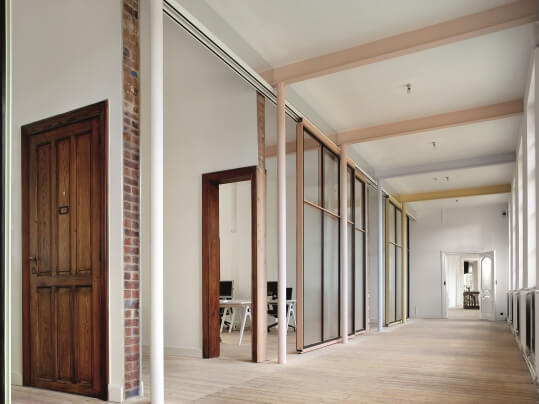

The urge to reconcile contradictions seems crucial to the architecture of architecten jdviv: real and unreal, far away and close up, essential and incidental, architecture and technology, focus and periphery. Ultimately, what do you stand for?
"I have always felt an affinity with the court jester and his mix of jokes and unvarnished truth – the only person whose insolence towards the king is tolerated. Maybe that sounds a bit exaggerated, but similar forces play a part in many of the things we have made. We succeed in doing things in our buildings that no one else would get away with."
Want to read more interviews like this? ArchIdea is our bi-annual magazine that features well known and upcoming architects from all over the world alongside some of the latest projects in which our floor covering has been installed.
To start receiving your FREE copy, sign up here